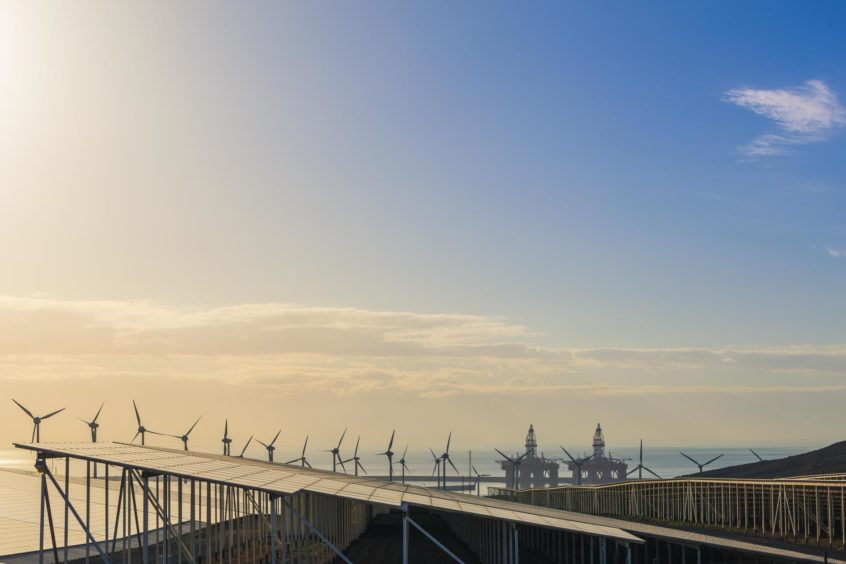
The UK government has published its long-awaited Net Zero Strategy, with new support to help decarbonise offshore assets and updated plans for ensuring oil and gas licences meet climate goals.
The Strategy brings together commitments from multiple policy documents set out over the past year, including the Prime Minister’s Ten Point Plan, the Energy White Paper, North Sea Transition Deal (NSTD), Industrial Decarbonisation Strategy, Transport Decarbonisation Plan, and Hydrogen Strategy.
Drawing on almost all segments of the UK economy, the government says the Net Zero Strategy would support up to 440,000 jobs and unlock up to £90 billion of investment by 2030, on a path to net zero emissions by 2050.
The oil and gas sector falls under the ‘fuel supplies and hydrogen’ section of the Strategy. Although responsible for around 5% of UK emissions, the effects of fuel switching and emissions reduction seen here are likely to have ripple effects through other sectors.
Building on policies set out in the NSTD, the Strategy reaffirms a commitment to “address barriers to electrification of oil and gas production” by the end of 2022, alongside continued efforts to reduce routine flaring and venting.
In particular, it says step-change abatement will be delivered by the electrification of existing and new offshore assets, via connections with onshore networks or offshore renewables.
To achieve this, the government says it will work with regulators to review supporting infrastructure in the Offshore Transmission Network Review and to address regulatory barriers.
This will involve “a new approach to onshore and offshore electricity networks to incorporate new low carbon generation and demand in the most efficient manner,” the government says, while taking into account of the needs of local communities.
It adds that £1 million of additional funding would be made available from 2021-22 to “support removing further barriers.”
The Strategy reaffirms commitments to “regulate the oil and gas sector in a way that minimises GHG emissions” via the revised Oil and Gas Authority (OGA) strategy, and to establish a ‘climate compatibility checkpoint’ for future licensing on the UK Continental Shelf by the end of 2021.
A consultation seeking input on the design of the checkpoint will be published before COP26.
Flaring and venting
The Net Zero Strategy also recognises action on methane emissions, notably endorsing the NSTD to accelerate reductions beyond the World Bank’s ‘Zero Routine Flaring by 2030’ initiative, and the publcation of new OGA guidance, which sets out the expectation that all facilities should have zero routine flaring and venting by 2030 or sooner.
The publication of industry’s Methane Action Plan in June is noted, as well as its expectation that all assets will have their own unique reduction plans in place by the end of 2022.
Meanwhile, the North Sea also remains a key area of focus for low-carbon power, with the Strategy reaffirming a commitment to building 40GW of offshore wind by 2030, 1 GW of which would be comprised of floating turbines.
Onshore, it upholds Hydrogen Strategy plans to blend hydrogen up to 20% by volume into the gas distribution network, and up to 2% into the gas transmission network, along with biomethane and natural gas.
Subject to both economic and safety cases, the government says a final decision on hydrogen blending will be made by the end of 2023.
Setting out his vision for the Net Zero Strategy, Prime Minister Boris Johnson said:
“For years, going green was inextricably bound up with a sense that we have to sacrifice the things we love. But this strategy shows how we can build back greener, without so much as a hair shirt in sight. In 2050, we will still be driving cars, flying planes and heating our homes, but our cars will be electric gliding silently around our cities, our planes will be zero emission allowing us to fly guilt-free, and our homes will be heated by cheap reliable power drawn from the winds of the North Sea.
“And everywhere you look, in every part of our United Kingdom, there will be jobs. Good jobs, green jobs, well-paid jobs, levelling up our country while squashing down our carbon emissions.”
Responding to the publication of the Strategy, OGUK sustainability director Mike Tholen said: “Today has been a big day for net zero and how we produce cleaner energy. With the government publishing a raft of policy measures, OGUK will now work through the detail of this with our members and respond to government in more detail in due course.
“We are already working in partnership with the UK Government to deliver a transformational North Sea Transition Deal, the first of a G7 nation, which sets out exactly how we will move towards a lower carbon future. The UK’s oil and gas industry is changing and we are well on our way to an exciting future.”
The Net Zero Strategy will now be submitted to the United Nations Framework Convention on Climate Change (UNFCCC) as the UK’s second Long Term Low Greenhouse Gas Emission Development Strategy as part of the 2015 Paris Agreement.
Recommended for you
